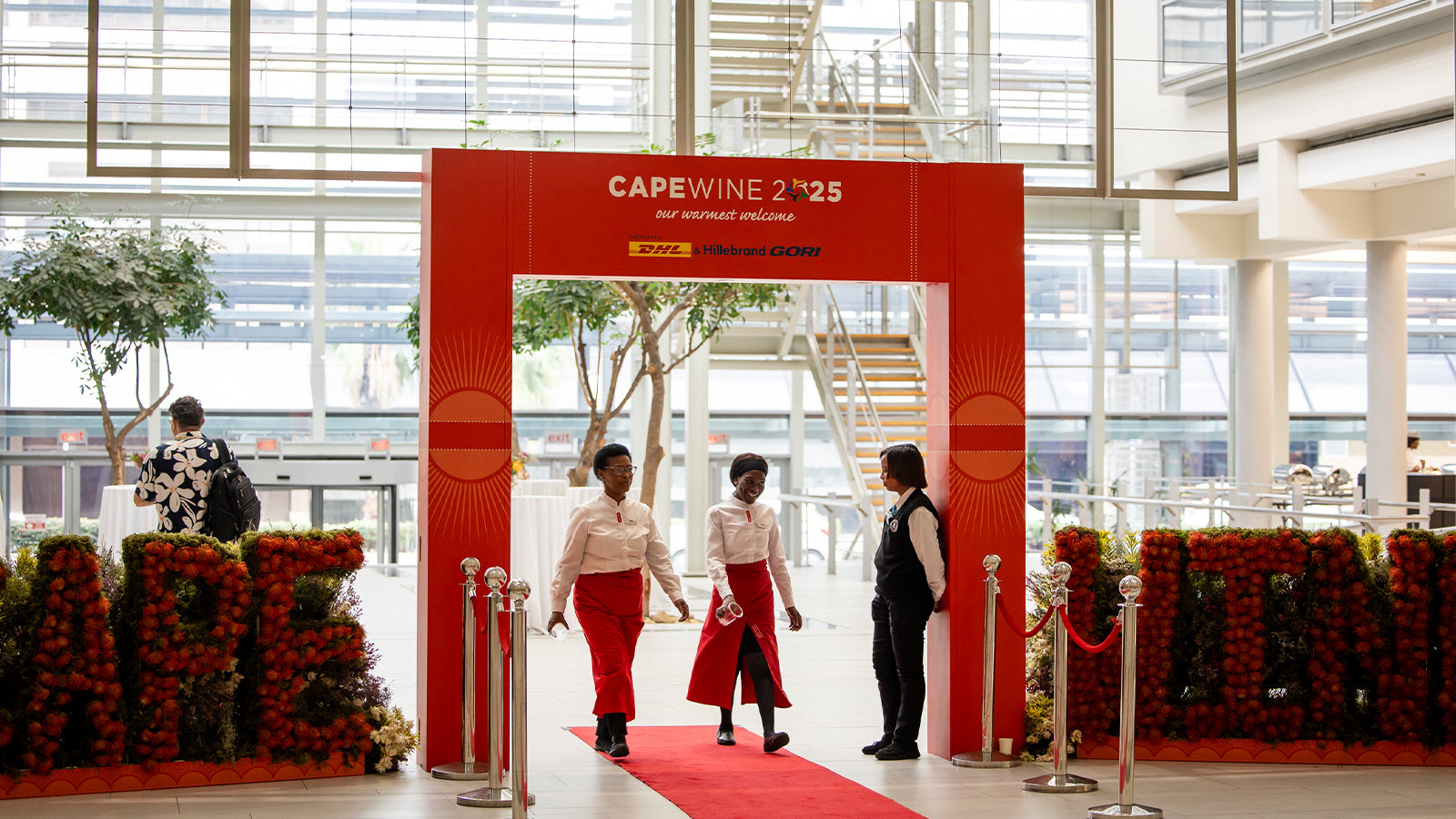Every three years, the global wine industry gathers in Cape Town for Cape Wine, the flagship showcase of South African wine. This year’s edition, held from 10–12 September 2025 at the Cape Town International Convention Centre (CTICC), has already been called the best to date.

A Showcase of South African Excellence
Cape Wine has grown from its modest beginnings in 2012 into an event that now fills two massive halls at the CTICC. With around 400 wineries represented across several hundred booths, the show is more than an exhibition — it’s a stage for the stories, people, and heritage behind South African wine. From established estates to fresh new voices, the diversity and passion on display confirmed why Cape Wine is regarded as a world-class industry event.

The opening address by Minister John Steenhuisen set the tone for three inspiring days. The atmosphere on the floor reflected a shared pride in South Africa’s winemaking tradition and its growing global recognition.
Behind the Scenes: Building Cape Wine

While visitors experienced beautifully finished booths, behind the scenes was a remarkable feat of design, engineering, and logistics. For the fifth edition in a row, the entire expo build was delivered by Xanita — using more than 5,000 engineered fibreboard panels to create both custom and generic stands.

The numbers tell the story:
-
Hundreds of booths designed, produced, and installed in just 2–3 days
-
A complete overnight teardown once the show closed
-
Flat-packed logistics, multiplying to ten times their size on the show floor
-
Bold, sustainable designs — including the DHL Hillebrand Gori stand soaring over 5 metres high

This consistency since 2012 demonstrates the advantages of Xanita board: faster setups, less chaos, fewer resources, and a dramatically smaller environmental footprint compared to traditional builds.
From Blueprint to Flat-Pack: Efficiency Meets Creativity
Months before the first boards were cut, the design process was already underway. Digital files were engineered with precision, allowing each winery’s brand personality to shine while ensuring the structures could be manufactured and assembled quickly.

The lightweight yet rigid nature of Xanita board meant crews could work faster with fewer people, minimising disruption and cost. By the time the doors opened, hundreds of unique booths had transformed two empty halls into a vibrant showcase of South African wine.
Sustainability at the Core
Sustainability is not an afterthought at Cape Wine — it is central to the event’s identity. The use of Xanita board across the expo illustrates how world-class exhibitions can be created with renewable materials that are lightweight, strong, and flat-packable.

Just as important is what happens after the show: stands are carefully disassembled and either re-used, re-packaged, or recycled. Instead of ending up in a landfill, the materials begin their next lifecycle, ensuring the impact is as light on the environment as possible.
A Model for the Future of Events
Cape Wine 2025 demonstrated that world-class exhibitions can be run without the waste traditionally associated with trade shows. Just as South African wine is carving out its place on the world stage with quality and authenticity, the event itself set a benchmark in how design and sustainability can work hand in hand.

As the global conversation around events shifts towards accountability and environmental responsibility, Cape Wine has positioned itself not just as a celebration of wine, but as a case study in how to do things better.
In 2025, it wasn’t only the wines that left an impression — it was the way the story was told, from vineyard to glass, and from blueprint to recycling bin.




Share:
Polo South Africa Brand Activation Wall